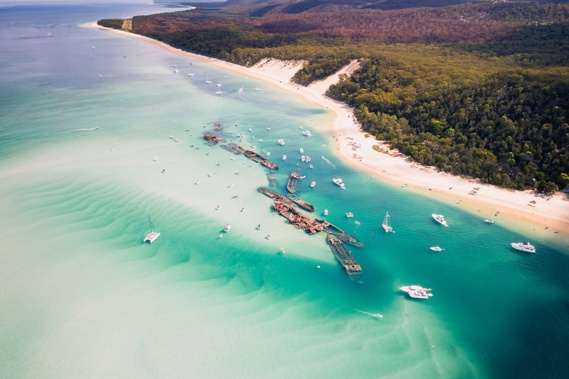
Under a cavernous blue sky, I swapped the urban beats of Brisbane for a quick escape to Moreton Bay. Departing Holt St wharf, my 60 minute ferry ride whisked me across to Tangalooma Resort on Moreton Island, an unpretentious bolt-hole for some blissed-out island time. Lassoed by vivid blue waters teeming with marine life, Moreton Island happens to be the third largest sand island in the world. Consisting entirely of sand, apart from a small area of sandstone and rhyolite at Cape Moreton, this giant sand castle is surprisingly draped in verdant, steep-sloped forest and a wealth of colourful flora.
96% of the island enjoys national park status. It’s also home to the highest coastal sand dune in the world, Mount Tempest, which at 285 metres high, delivers unrivalled views across the glittering waters of Moreton Bay. Like Moreton Island, its neighbouring brothers, Stradbroke Island and Fraser Island round out the world’s biggest sand islands. With so much brochure-perfect soft white sand to shake your bucket and spade at, sand-mining was a big business on Moreton Island until it was completely banned by the Queensland government in 1989, while sand-mining on “Straddie,” only ended two and half years ago.
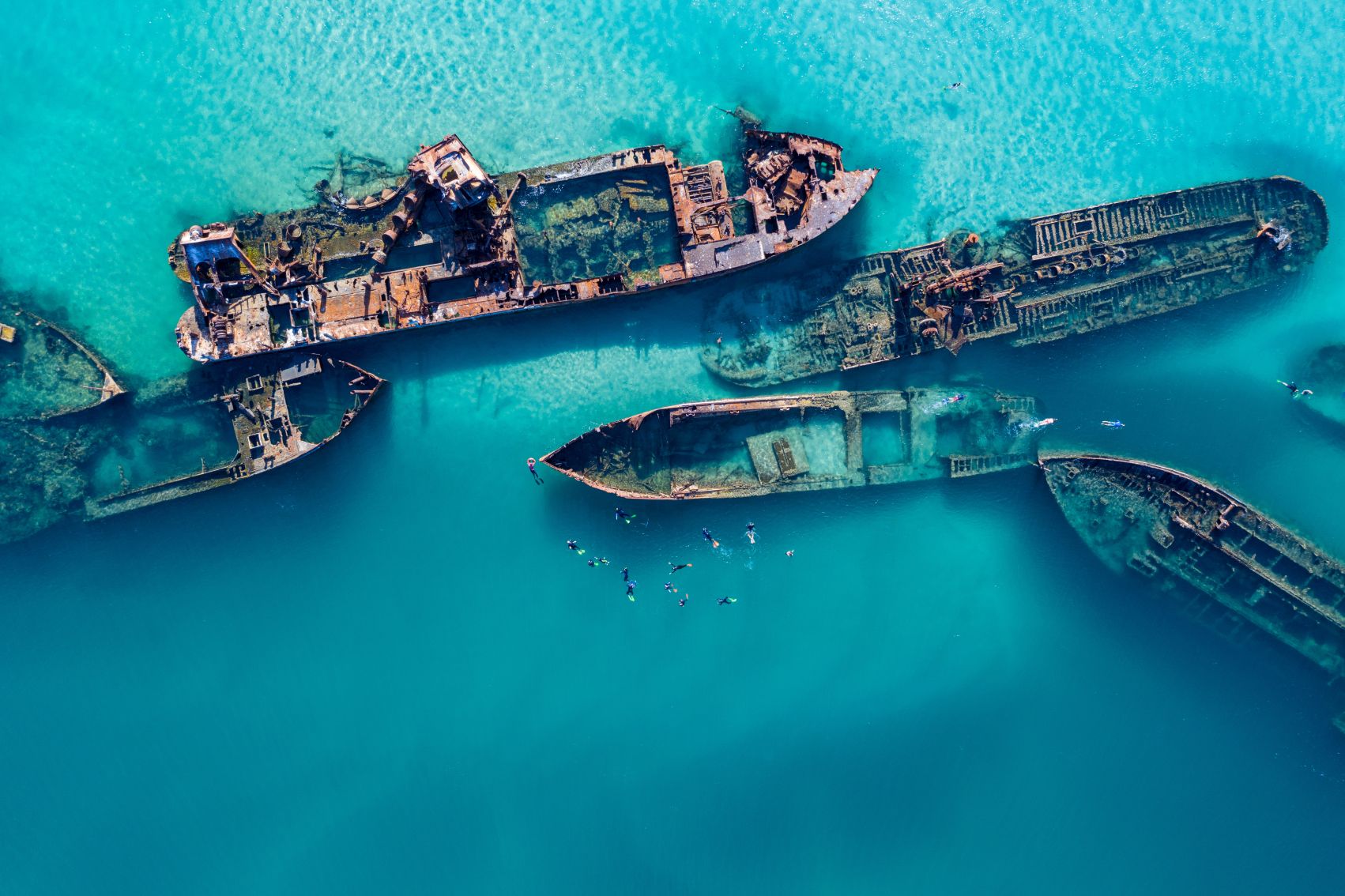
There’s all manner of historic nuggets to admire on Moreton Island. You’ll definitely want to head to the bright red Cape Moreton Lighthouse, built by convicts in 1857 from local sandstone. Ever since, it’s been a trusty aid to shipping, trying to enter the shallow and complex waters of Moreton Bay. The lighthouse has been solar-powered for the past 30 years. During the two world wars, Moreton Island was developed as a major line of defence against an attack on Brisbane. During World War II there were 900 troops stationed on the island.
Post-war, Tangalooma was first developed as a whaling station, finally closing in 1962. A brutal harpoon is on display, as a memorial to the grisly whaling days. You can join a whaling station talk and tour to learn about the history and operations of the station and how the island did a spectacular about-face, switching from exploiting these giant mammals to becoming one of Australia’s great homes to sustainable whale watching.
At this time of the year, it’s migration season, with an estimated 36,000 Humpback whales cruising from Antarctica to Queensland (and back again) between June and October. The resort guarantees you will see a whale on their cruise, with juveniles frequently breaching alongside the boat.
In 1963 the Tangalooma Whaling Station was sold to a syndicate of Gold Coast businessmen and since 1980, the resort has been owned by the Osborne family, who are passionate about providing great-value island holidays, while pursuing their passionate commitment for supporting the wondrous natural environment.
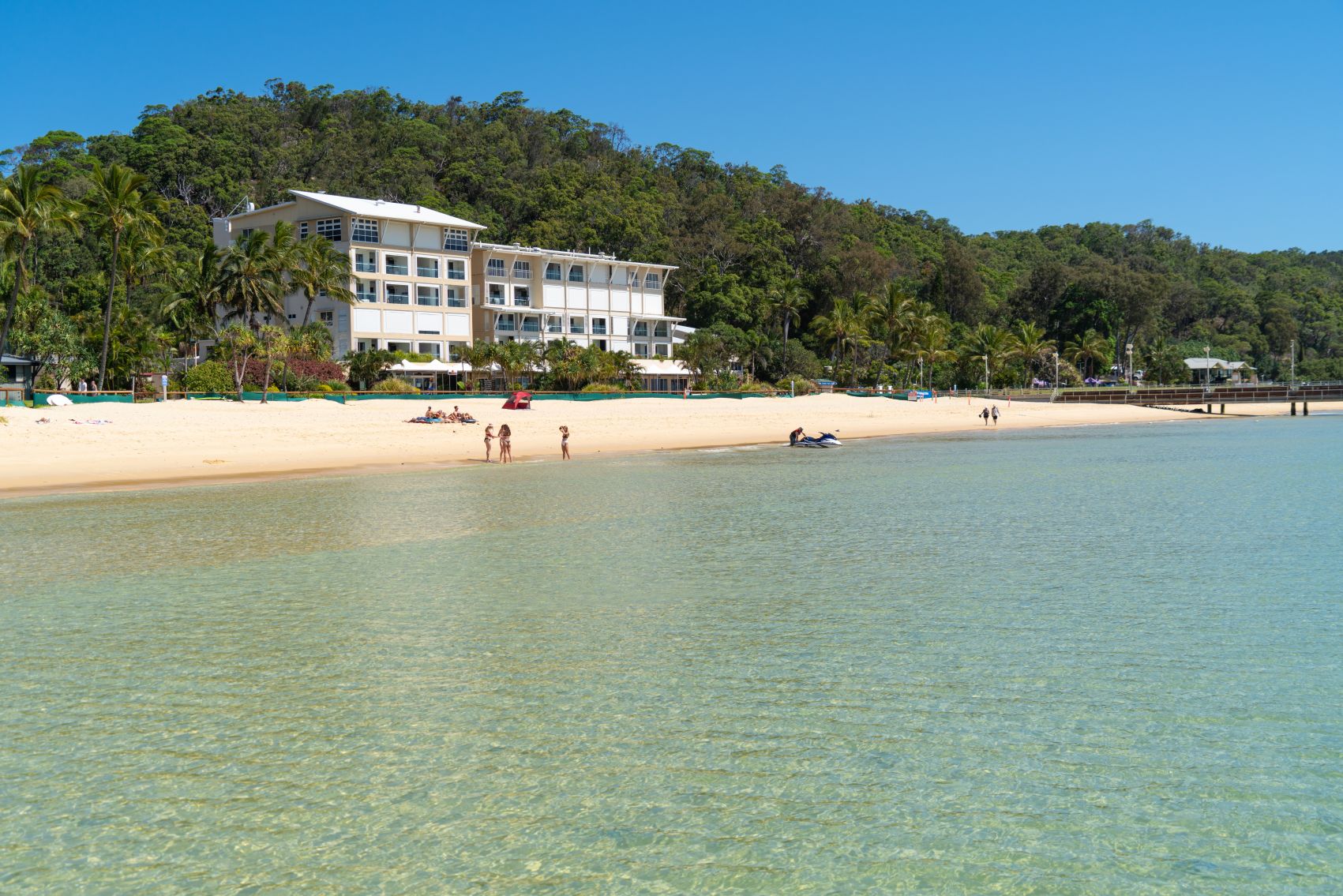
I headed north up the vast sweep of white sand beach from the resort to the Tangalooma Wrecks. Just offshore, 15 ships were sunk between the 1960s and 1980s to create a protected channel for boats to moor. This drowned fleet of retired steam-driven dredges and barges were scuttled on the edge of a sandbank to form a breakwater and safe anchorage for recreational boaties. Jutting above the waterline, it absolutely looks like a maritime graveyard. But the real spin-off has been the fish life, with magnificent coral formations blooming around the wrecks, creating a giant aquarium for tropical fish, trevally, kingfish, nudibranch, yellow tails, sting rays, sea turtles – and best of all, wobbegong sharks. There are over 200 species of fish that inhabit the area. Take a snorkel or dep dive to admire the techni-coloured underwater world.
Sticking with the wildlife, there’s a fabulous array of activities including Pelican feeding. Every morning at 11am, wildlife rangers feed the Australian Pelicans and tell you more about these majestic looking birds. Watch out for the Cormorants and various other seabirds that gate crash proceedings in the hope of a free feed. This all takes place from the Tangalooma Jetty.
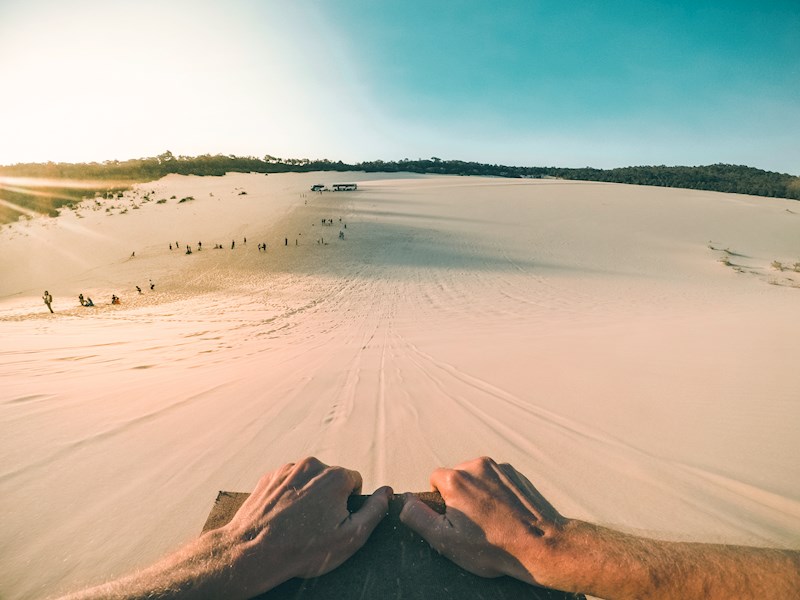
Ever since the installation of lights of the resort jetty in 1960, bottlenose dolphins have been cruising into the resort at twilight, hunting bait fish which were attracted by the lights. This gave birth to the enduring wild dolphin feeding programme, which continues every night at sunset. Tangalooma has a government permit to run the dolphin feeding programme which is heavily regulated. Book a spot on the small-group programme, wade into the tranquil waters of Moreton Bay and the team of marine biologists will show you how to feed the dolphins, waiting patiently in the shallows. Hold your herring like an ice-cream cone! It’s a graceful, indelible encounter.
Alongside dolphin feeding, another banner Tangalooma experience is sand tobogganing. Backing the small settlement is Tangalooma desert and its mighty dunes. I took a safari tour to the desert, on a thrilling, bouncy 4WD bus tour, where getting there is half the fun. As a virgin to sand tobogganing, I found it utterly exhilarating, hurtling down the sandhill at 40km per hour, with just a flimsy wooden board to hold on to.
40km might not sound that fast, but trust me, when you are hurtling down a steep sand dune, head first on your tummy – it is! There’s even a photographer standing by to capture your fun-filled or fearful face, as you blast by. I ripped down the dune three times, although the hardest task was mustering the energy to keep mounting that 30-metre-high sand dune, to reach the launch pad. My calves paid the price for several days. The safari is also a superb way to see the pristine island beyond the scene-stealing shoreline.
If a daytrip to Moreton Island isn’t long enough for you, book an overnight stay at Tangalooma Island Resort. There’s a wide range of room types – from standard hotel rooms to deluxe villas and large apartments for families, wrapped with resort facilities and an abundance of dining options. Enjoy more casual fare at the Beach Café or spice it up with fabulous Asian fusion cuisine at Fire and Stone. And a good libation is never far away.
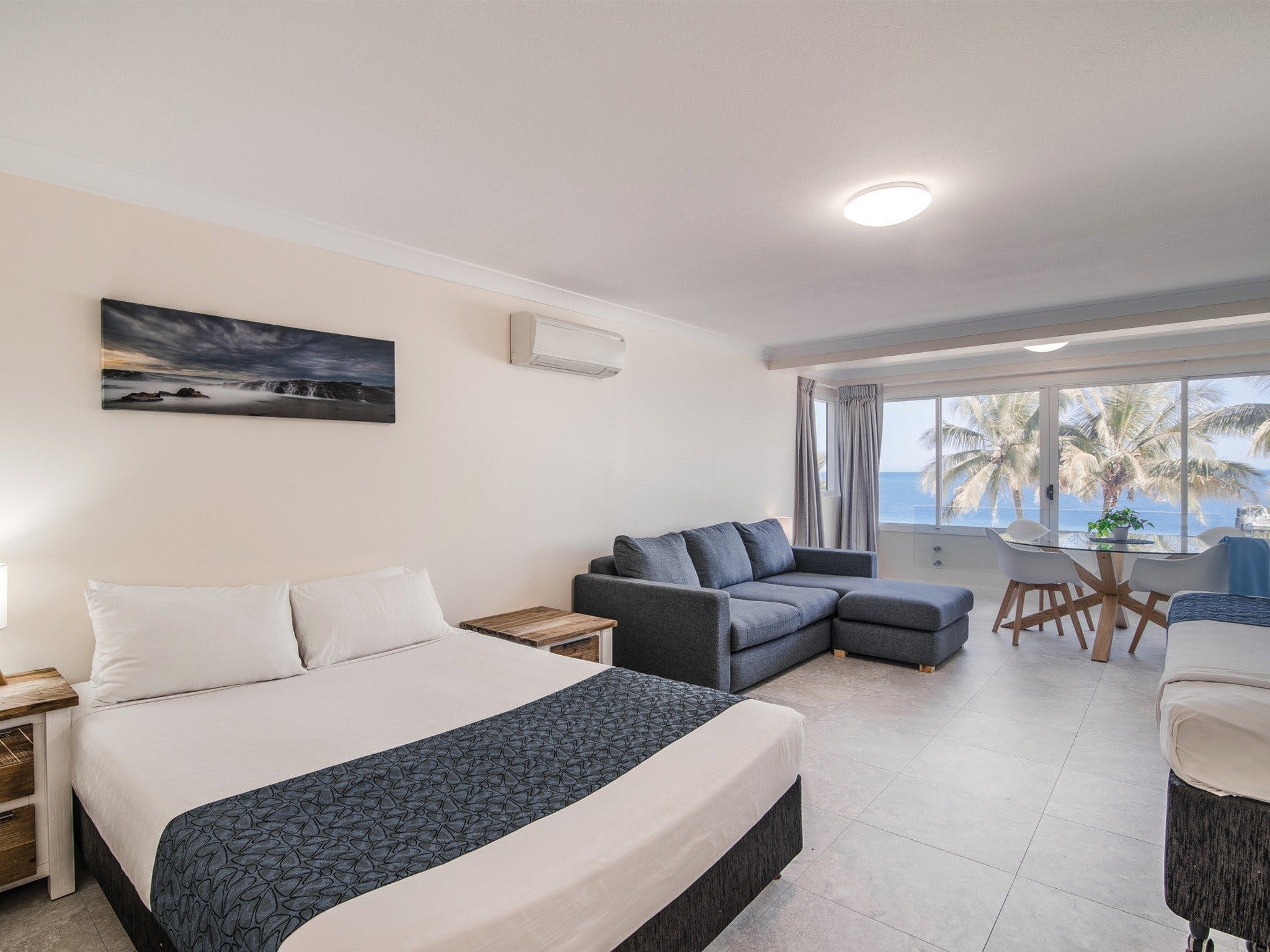
There aren’t too many places on Australia’s East Coast where you can watch the sunset over the water, but you can at Tangalooma. After lapping up a fireball sunset, the languid waters rippled all pink and grey. After dark, with the sea turning midnight ink, the sky above Tangalooma was full of twinkle, far away from the city lights. The chirpy, cheerful and outgoing staff are the cherry on top of a stress-free getaway to Tangalooma Resort. www.tangalooma.com
Discover the soul of Brisbane and beyond. With stunning natural assets, a laidback charm and a subtropical alfresco lifestyle, Queensland sure knows how to lay on the seduction factor. For timely tips and trip inspiration, start your exploration on the Sunshine State’s official visitor website. www.queensland.com
Mike Yardley is our resident traveller on Jack Tame Saturday Mornings.
Take your Radio, Podcasts and Music with you









